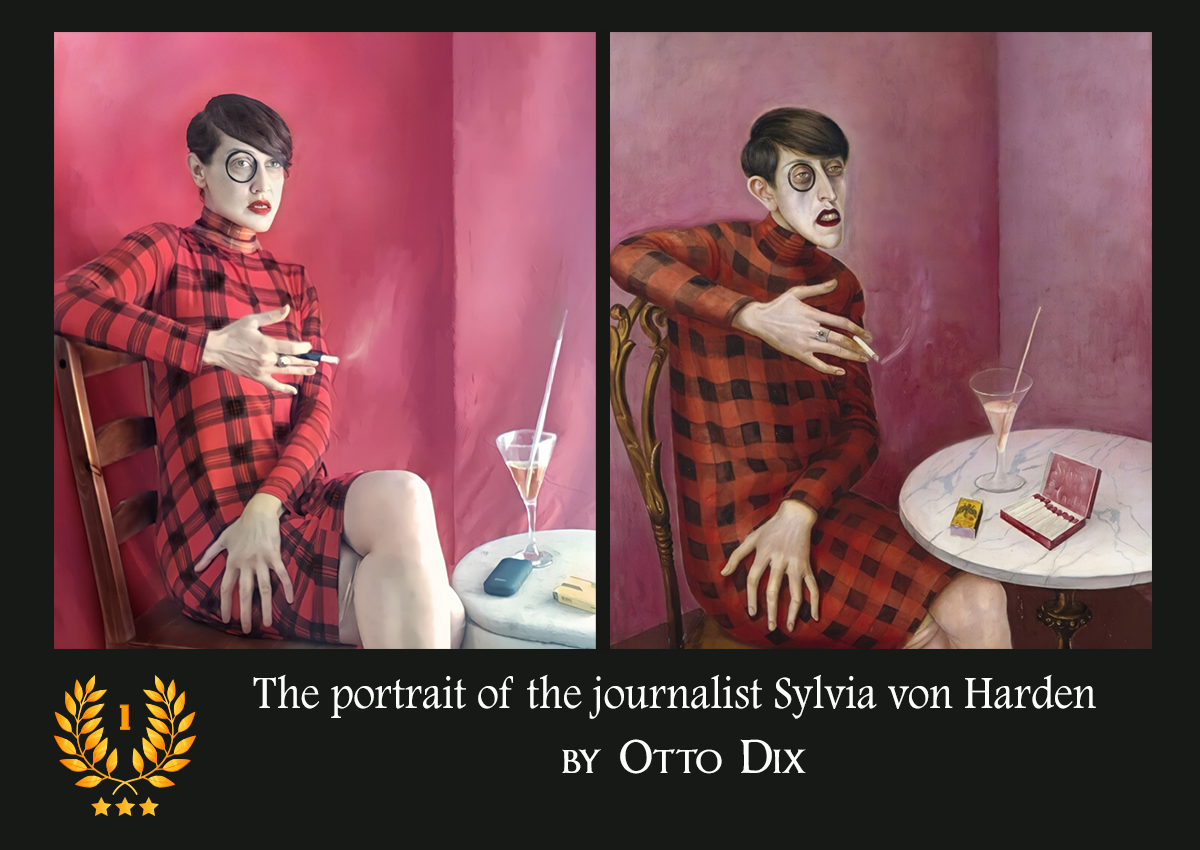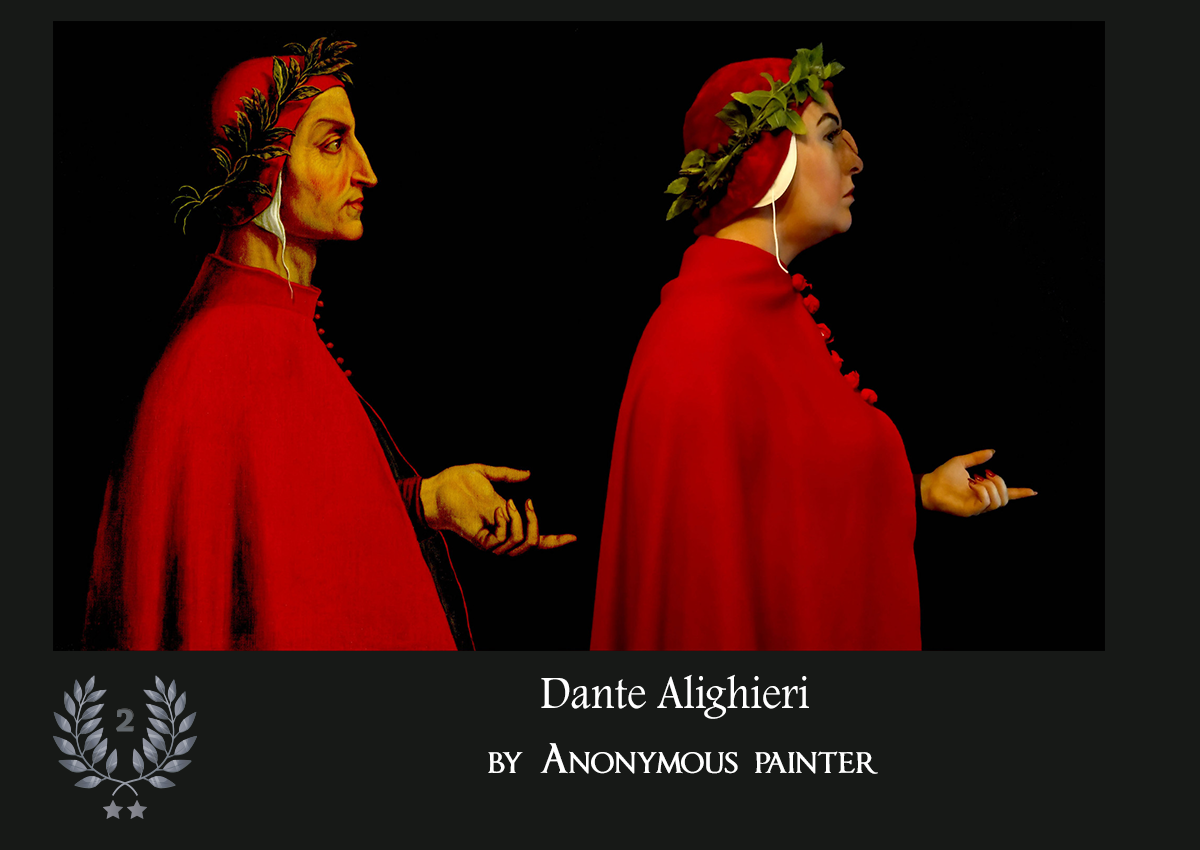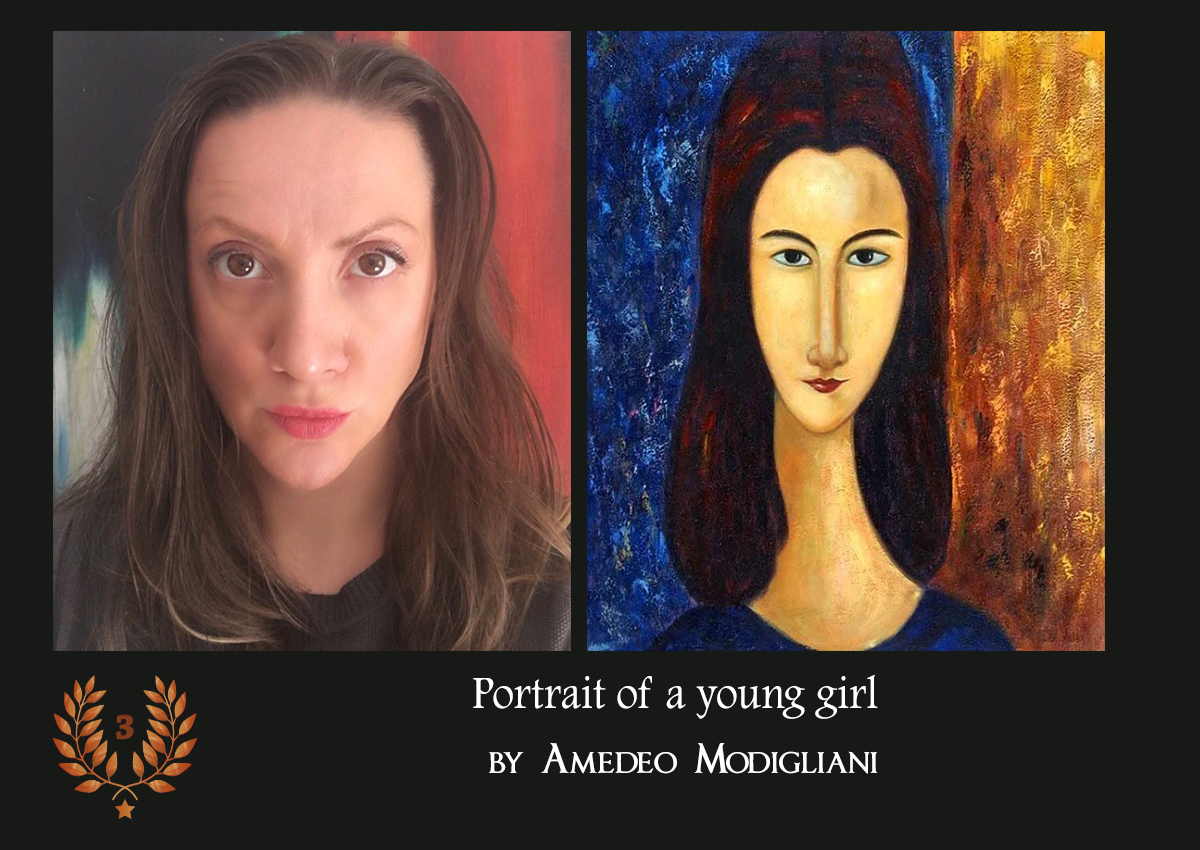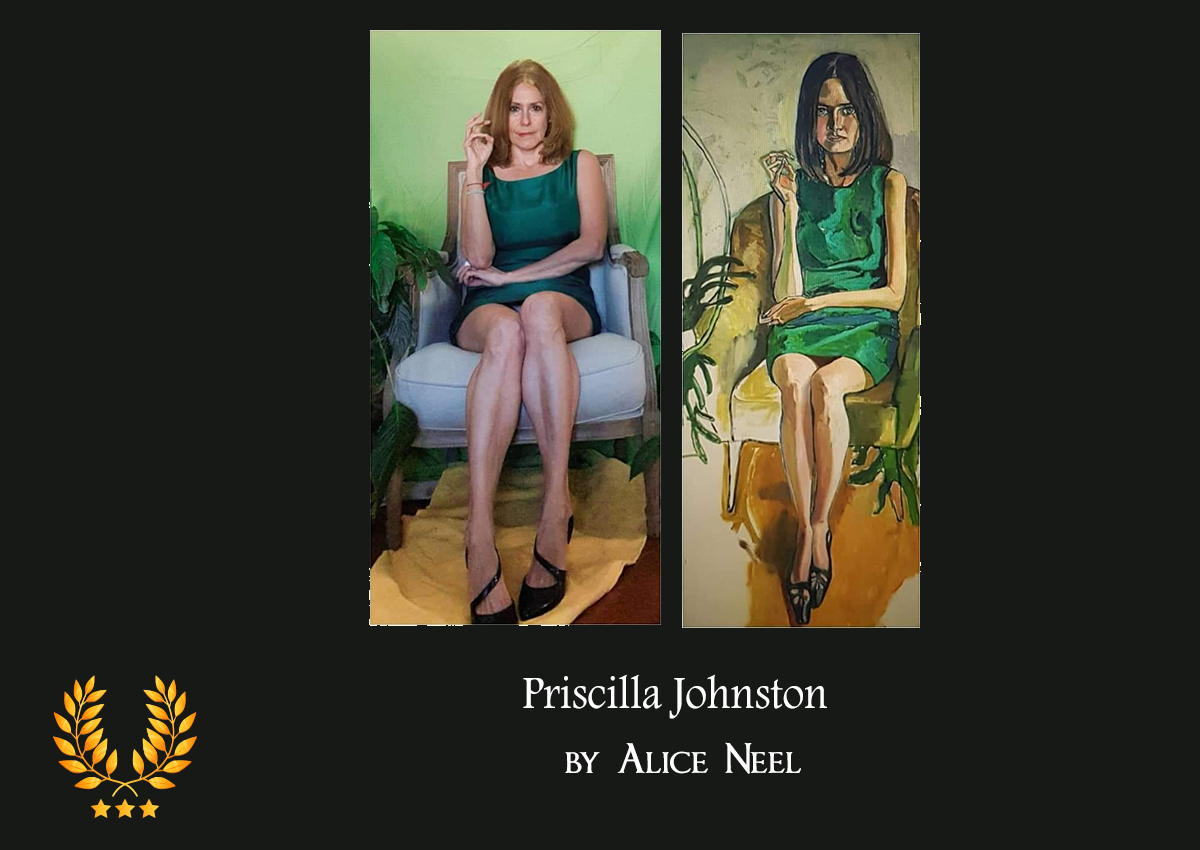First Place
The first prize goes to Júlia Fazakas for her interpretation of The Portrait of the Journalist Sylvia von Harden by the German painter Otto Dix was painted in 1926. The painting is on wood, mixed technique of oil and tempera in the old masters’ style.
The image is exaggerated to represent a stereotype. Otto Dix’s depiction makes the viewer perceive her not only as an individual but also as a symbol of a wider reality. The painter met Sylvia in the street by chance and was inspired by her looks. He exclaimed ‘I must paint you! I simply must!... You are a representative of an entire epoch!’
‘So, you want to paint my lack-luster eyes, my ornate ears, my long nose, my thin lips; you want to paint my long hands, my short legs, my big feet—things which can only scare people off and delight no one?’, the journalist replied.
‘All that will lead to a portrait representative of an epoch concerned not with the outward beauty of a woman but rather with her psychological condition.’
Von Harden then agreed to pose and sat for the artist during several sessions in the following weeks. The portrait is recreated in the opening and closing scenes of Cabaret the 1972 Bob Fosse film, set in Berlin during the Weimar Republic. In 1961 the Musée National d’Art Moderne in Paris bought it was from the artist.
Second Place
The second prize goes to Sebastian Felzmann for the interpretation of the Portrait of Dante Alighieri from the Ambras Castle collection in Austria. Dante Alighieri is described as the "father" of the Italian language, and in Italy he is often referred to as the “Supreme Poet". His poetry is representative of the Trecento, which is known as the time of heightened literary activity. The Divine Comedy is widely considered one of the most important poems of the Middle Ages and the greatest literary work in the Italian language.
This portrait of Dante, although the artist remains unknown, is an example of the style of the Italian school in the 15th and 16th centuries. As usual, Dante is depicted wearing a laurel wreath, as that was the way poets were represented. The laurel became the symbol of poetry and wisdom, referring to the myth of Apollo and Daphne and that's why in Italy university graduates hold a laurel wreath as a sign of prestige and knowledge.
Dante is also famous for establishing the use of vernacular in literature at a time when most poetry was accessible only to the most educated, as it was written in Latin. His use of the Florentine dialect in his works “The New Life” and “Divine Comedy” helped establish the modern-day standardized Italian language.
Third Place
The third prize goes to Dia Mantova for her interpretation of Portrait of a Young Girl by Amedeo Modigliani. Amedeo Modigliani (1884 – 1920) was an Jewish Italian painter and sculptor who worked mainly in France, where in 1917 he met Jeanne Hébuterne, also a painter. Their love burned fast and they soon got married. Described by writer Charles-Albert Sengria as a subtle, shy, quiet and delicate woman, Jean Ebuterne became the main subject of Modigliani's works.
Modigliani is known for his portraits and nudes in a modern style characterized by a surreal elongation of the images that were not received well during his lifetime, but later became much sought-after. For ‘Portrait of a Young Girl’ Modigliani captured Hébuterne up close with her head tilted down and her gaze looking directly out to the viewer. This creates an intimate portrait, but like most of Modigliani's portraits, he depicted Hébuterne with an elongated face and neck and almond shaped eyes.
The Audience Favourite
The audience favourite is awarded to Ethel Bustamante for Alice Neal’s Portrait of Priscilla Johnston interpretation. Alice Neal (1900 –1984) is an American visual artist, known for her portraits depicting friends, family, lovers, poets, artists and strangers. As an artist, Neel did not belong to her time. She was curious about people just as they were. Working in a period when abstraction was favored, she did not gain critical praise for her work until the 1960s.
The artist used call herself a soul-collector. Typical of her works is the expressionistic use of line and color, psychological insight and emotional intensity. She worked in a mode known as social realism, confronting humanity forthright with no irony to spare the viewer.
“Portrait of Priscilla Johnston” (1966) is a full-length oil on canvas portrait, depicting a friend of the artist’s son. The subject’s dress and hair represent a vivid comment on America’s privileged youth during the 1960s. The work is on display at the Speed Art Museum, Kentucky.
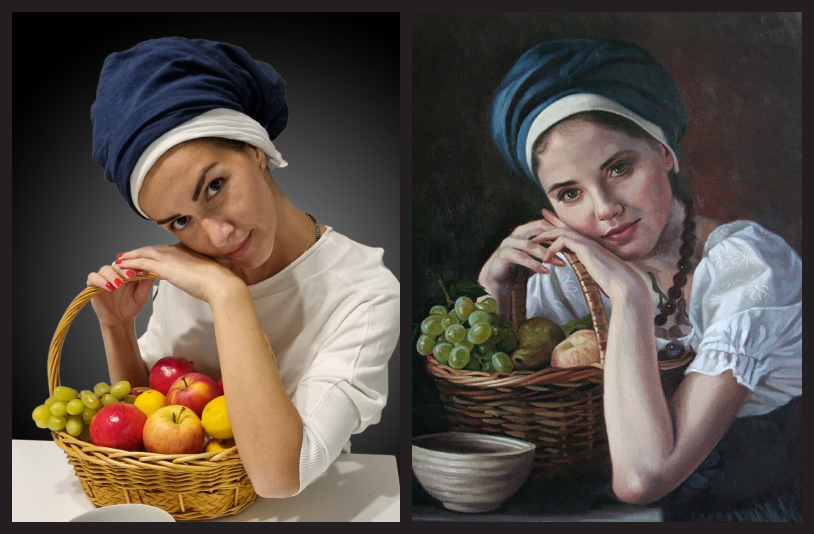 Some works of art never stop fascinating us. We call them masterpieces. Their originality is special, they capture the imagination, survive the test of time and change the way artists depict the world.
Some works of art never stop fascinating us. We call them masterpieces. Their originality is special, they capture the imagination, survive the test of time and change the way artists depict the world.